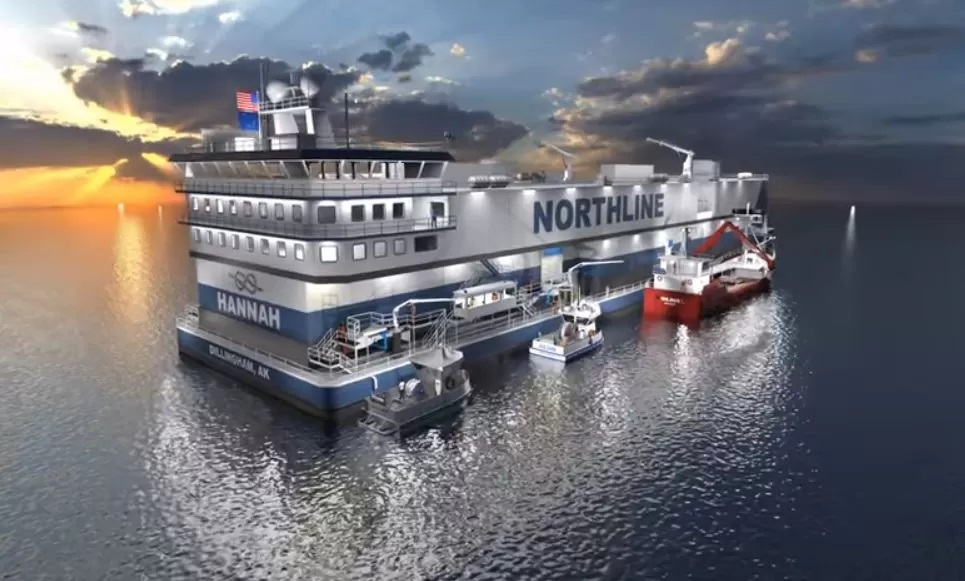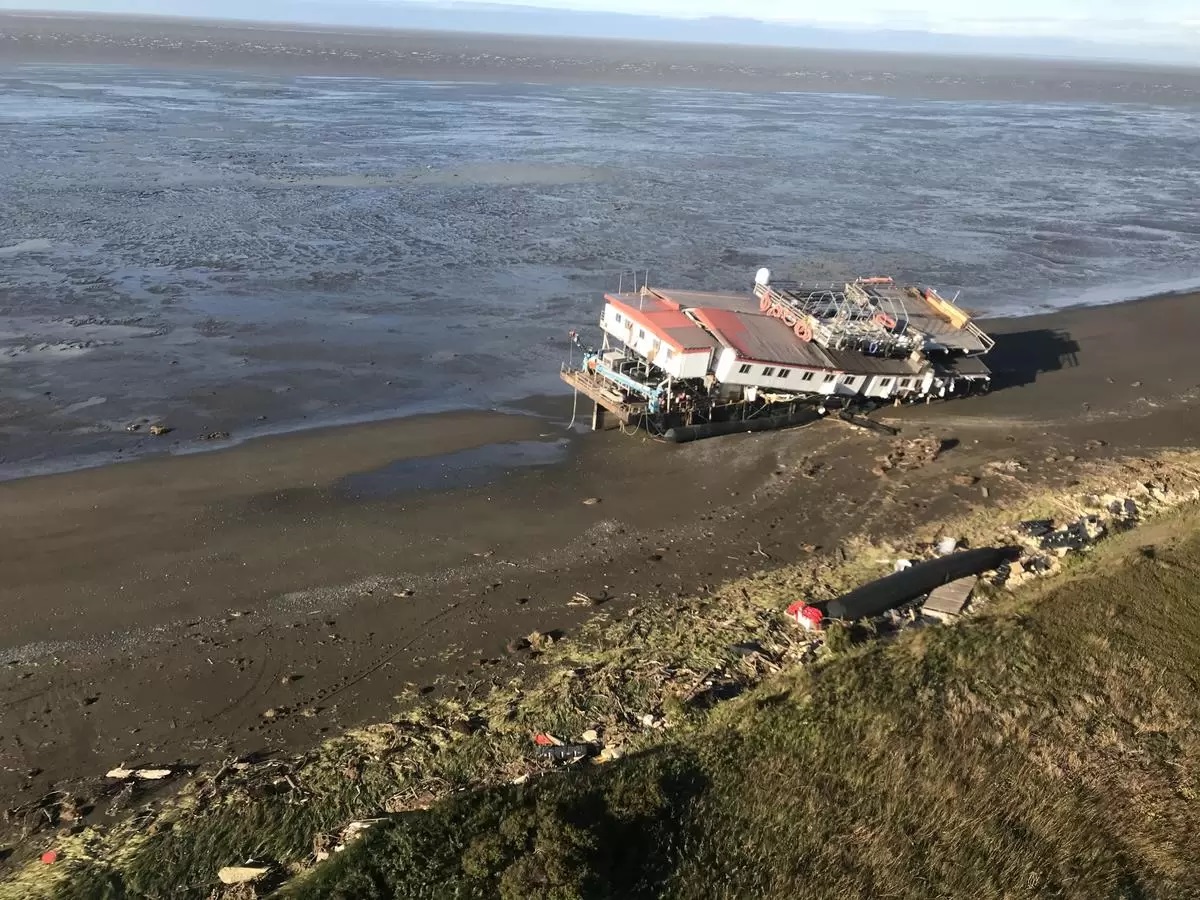
The wreck of its fish processing barge in Bristol Bay two years ago could have been the end of the newly-formed Northline Seafoods, but the Sitka-based operation is planning a comeback – in a big way.
On Wednesday Northline announced it had received a $40 million federal food supply chain loan, to not only to rebuild its floating processor but also to reinvent the region’s processing industry.
The pictures from the wreck of Northline’s SM-3 processing barge are not pretty. The 150-foot vessel began service in Southeast Alaska as a platform for helicopter logging, with an upper deck originally designed for aircraft.
That superstructure collapsed when the SM-3’s anchor buoy parted in a September gale in 2020, and 80-mph winds blew it ashore in Bristol Bay not far from Ekuk.
The six crew aboard escaped unharmed, but the $7 million barge was a crumpled pile of twisted metal in the hands of salvagers and insurance agents.

Northline CEO Ben Blakey says the loss of the SM-3 was also a turning point, and a chance to rethink the company’s model, which is to have a floating processor available closer to the fleet, and spare them the long run from the fishing grounds to shore-based processors in Naknek. The SM-3 was innovative, but it wasn’t perfect.
“We had to ship using the traditional methods of freeze containers that increases cost – it’s very inefficient,” Blakey said. “And there’s there’s snags and snarls along the path from Alaska to Seattle. So this new barge will actually integrate the freezing process: buying fish from fishermen, freezing them, we’ll store them on board, and then tow the entire vessel to the Pacific Northwest, in the winter months where they’ll be distributed. So it’s kind of a way to cut out cold storage, cut out shipping, and take it all in-house and consolidate it.”
With $40 million now in hand from a U.S. Department of Agriculture Food Supply Chain loan, plus another $22 million in financing from a company called Greater Commercial Lending and a Seattle investment banking firm Zachary Scott, Northline is literally doing what President Biden’s infrastructure bill suggests and “building back better” – or at least, bigger. The new processor, the Hannah, will be three times larger than the SM-3. But like its predecessor, the Hannah will also be a repurposed vessel – in this case, a massive container barge.
“It had been shipping containers between, I believe, Florida and the U.S. Virgin Islands,” Blakey said. “So it’s older, it was built in the late ’90s. But it has a lot of life left. And it’s large – it’s 400 feet long by 100 feet wide, which is substantially larger than the last barge that we rebuilt.”
Read more details about Northline’s plans here.
Blakey says that even before the SM-3 was wrecked, Northline was looking for ways to improve its model of flash-freezing fish in the round, and shipping them directly to markets for processing. Initially, the idea was to build another barge for storage and shipping, to tie alongside the SM-3. After the accident, Blakey credits the company’s chief technical officer, Drew Cohen, for coming up with the all-in-one concept behind the Hannah. Northline believes that doing more with less is a winning formula for the industry.
“It’s certainly a question of efficiency,” he said. “So the original platform was designed to operate with a smaller labor footprint, which we did. So we were able to freeze 200,000 pounds a day with a fraction (of the labor) of what you would typically use to freeze 200,000 pounds a day of headed and gutted fish. So we’re incorporating that. But then in addition, this platform is different. Since we’re adding in the shipping component and the storage component, we’re expanding our savings, and hoping to use those savings to both improve the market and quality but also pay fishermen a better price.”
The Hannah is being towed from the Gulf of Mexico to Bellingham, and construction will begin in January. The vessel will house about 75 processors and engineers, but most of its volume – 80 percent – will be cold storage. Once on the grounds, the Hannah will hold 14 million pounds of Bristol Bay sockeye: a Revolutionary War tribute to a revolutionary idea.
“It’s not the name of my wife or anyone else’s wife that I’m aware of,” said Blakey. “But its name is important to one of our investors. And also, as I understand it, it was the name of the first ship that the U.S. Navy commissioned in the late 1700s.”
Although the Hannah will be built in Bellingham, Blakey says that Northline’s offices and “brain trust” will remain in Sitka. The company plans to have the barge ready to enter service for the 2024 fishing season.
"fish" - Google News
December 03, 2022 at 12:17AM
https://ift.tt/OpeVDtX
A Sitka fish processor lost everything in 2020. Now it's planning a comeback. - Alaska Public Media News
"fish" - Google News
https://ift.tt/guehYTZ
https://ift.tt/a7wWXlB
Bagikan Berita Ini














0 Response to "A Sitka fish processor lost everything in 2020. Now it's planning a comeback. - Alaska Public Media News"
Post a Comment